34 F. high temperature in St. Cloud on Sunday.
32 F. average high on November 27.
27 F. high on November 27, 2015.
November 28, 1983:
Widespread snowfall occurs across much of central Minnesota with
snowfall totals at or above 1 foot in many areas. A record 15 inches
fell in Gaylord and 14 inches fell in Farmington.
November 28, 1960:
A major storm produces near hurricane force winds on Lake Superior,
with 20 to 40 foot waves on the lake. Erosion and damage occurred on the
North Shore.
"Thunderstorm Asthma" Hospitalizes 8,500 in AustraliaI thought I had seen everything. I was wrong.
6
people are dead, thousands temporarily hospitalized when moisture
within a thunderstorm hitting Melbourne, Australia combined with pollen
to trigger severe asthma attacks. A third of patients who suffered these
attacks reported never having asthma before. The storm broke up grass
pollen into tinier fragments, penetrating deep inside people's lungs.
These events are rare, but similar cases of thunderstorm asthma have
been reported in Britain, Italy, Canada and the USA.
Natural and
man-made pollutants lead to twice as many premature deaths in the USA as
auto accidents; over 70,000/year. People suffering from COPD and asthma
are most at risk. Some of the most severe cases of air pollution strike
in late fall, when warm air aloft can trap bad air near the ground.
Rain
showers linger today; the atmosphere marginally cold enough for light
snow later this week, but temperatures near 32F will keep roads wet
during the day.
I don't see any big storms, but NOAA's GFS model hints at the first subzero nighttime low at MSP
within 2 weeks.
Photo credit above: The Conversation in Australia, which has an explainer on thunderstorm asthma
here.
"Thunderstorm Asthma": Deadly Illness Caused By Freak Weather.
CNN.com
has more on the sequence of weather events that can result in extreme
asthma outbreaks, even among people who don't even realize they have
asthma: "...
People with hay fever are particularly at risk, Newbigin
said. He advised them to "better manage your hay fever during the
pollen season," by using antihistamines, eye drops and other
medications. Though normally hay fever occurs in the nasal area, the
freak weather conditions which cause thunderstorm asthma can drive the
allergens deep into the lungs, causing a far more severe asthmatic
attack. "Anybody with severe or brittle asthma (a less common form
involving severe but irregular attacks) is most likely to experience
severe symptoms and need rapid treatment," said Sheikh, adding that smog
days, pollution and smoking as other environmental triggers for an
attack. "They are much less likely to trigger it if there is good
underlying asthma control..."
NBC News has more details on "thunderstorm asthma"
here.
Australia's Bizarre Outbreak: "What Is Thunderstorm Asthma?" This is the first I heard of this phenomena, explained at Live Science: "...It's
thought that these outbreaks occur because, during thunderstorms,
pollen grains rapidly absorb water and rupture, leading to the release
of hundreds of small particles into the air, ASCIA says. These particles
can penetrate deep into people's lungs and trigger asthma attacks,
ASCIA says. Some outbreaks of thunderstorm asthma have also been linked
with increased levels of fungal spores in the air. It's also thought
that gusty winds in thunderstorms help to spread pollen particles and
other allergy-inducing substances. A 2008 study
that looked at emergency room visits in Atlanta over a 10-year period
found that there were 3 percent more visits for asthma on days following
thunderstorms. The link between asthma visits and thunderstorms was
strongest when the wind gusts during the storm were intermediate to
high, the study found..."
Thunderstorm Asthma: "You're Talking An Event Equivalent to a Terrorist Attack.
How and why pollen combines with thunderstorms to create these freakish
and deadly asthma attacks is still not fully understood. Frequency of
these rare outbreaks may be increasing for a variety of reasons, reports
The Guardian: "...
What
is known is that grass pollen is usually too big to get into the lungs
to cause asthma, and instead causes a reaction in the superficial
respiratory systems of those with pollen sensitivity: a hay fever
reaction such as a runny nose, sore throat and itchy eyes are more
common. But when a thunderstorm occurs, pollen which had settled during
the day can be swept back into the air and the moisture in those winds
combined with wind power causes the pollen to rupture into smaller
pieces, between 0.5mm and 2.5mm in diameter. Those small fragments are
then able to penetrate the superficial respiratory system and get into
the lungs, triggering asthma and other serious respiratory responses..."
Thunderstorm-Associated Asthma in Atlanta, Georgia.
Meteorologist Marshall Shepherd is among a handful of researchers who
delved into this rare phenomenon; here's an excerpt from
their findings: "
Associations
between thunderstorm activity and asthma morbidity have been reported
in numerous locations around the world. The most prominent hypotheses
explaining the associations are that pollen grains rupture by osmotic
shock in rainwater, releasing allergens, and that gusty winds from
thunderstorm downdrafts spread particles and/or aeroallergens, which may
ultimately increase the risk of asthma attacks. A full understanding of
“thunderstorm asthma” is crucial, especially with projections of
increases in heavy rainfall, thunderstorm events and aeroallergen
concentrations as the climate system warms..."
Floods, Snow and Mud Continue To Strike Washington. The Pacific Northwest has been thrashed with wind-whipped snow and rain, according to
The Olympian: "
Western
Washington was under alerts Saturday for flooding, snow and landslides.
The National Weather Service issued a landslide warning for western
Washington Saturday morning after heavy rain continued to strike the
region. Rainfall in the half-inch to two-inch range has been recorded
across much of western Washington since Friday..."
Monday Morning Weather Map.
A storm on the Dakota/Minnesota border pushes a pinwheel of moisture
across the eastern half of the USA today; warm enough for rain for most
of the nation, but a few inches of snow will pile up over the Dakotas.
Heavy valley rains and mountain snows are likely from the Pacific Coast
to Boise and Salt Lake City.
Plowable Snowfall Potential Next 72 Hours. From North Dakota to the Rockies and western coastal ranges, snow will fall hard in the coming days. Source:
NOAA WPC.
Long Overdue Southeast Soaking.
NOAA models predict 2-5" rains from Alabama into northern Georgia and
the western Carolinas, helping to extinguish brushfires and put a
serious dent in a 2-month drought.
Mild Monday, Then Cooling Down.
Nothing frigid through the middle of next week, just a return to
average temperatures after a Monday that will feel like something out of
mid-October. MSP data: WeatherBell.
2-Week Preview: Plenty Cold For Much of USA.
As inevitable as gravity (and bad reality TV) cold air pushes
relentless farther south in coming weeks as we get closer to the Winter
Solstice. No big troughs capable of spinning up major snow, ice and
rainstorms, but temperatures should trend colder than average from
Seattle to the Twin Cities, Detroit and Boston.
Read more here: http://www.theolympian.com/news/weather/article117237813.html#storylink=cpy
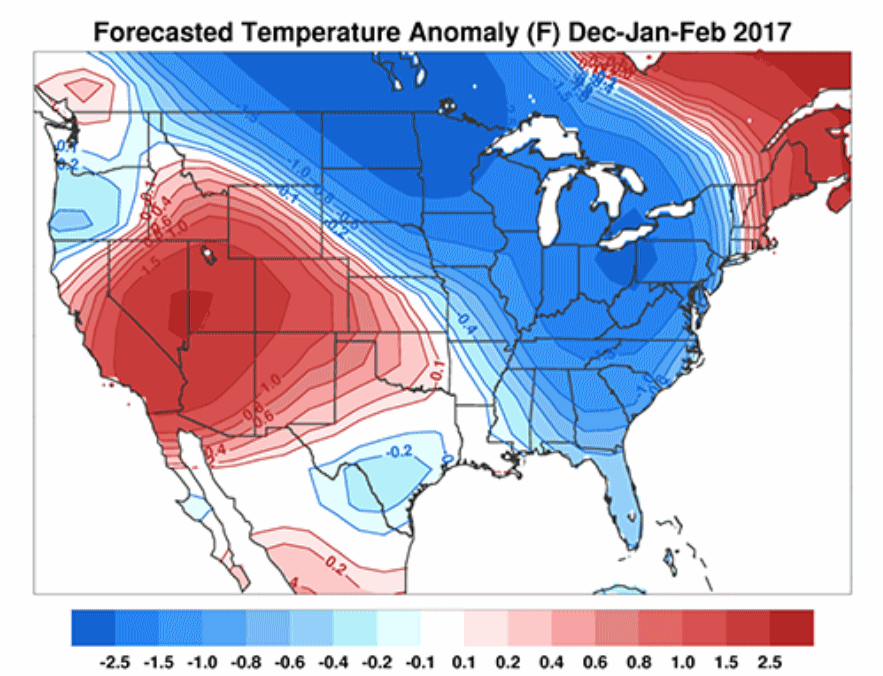 Map credit
Map credit above: "
Predicted
winter surface temperature anomalies for the United States Dec-Jan-Feb
2016/17 in degrees Fahrenheit. The model is forecasting colder than
normal temperatures for much of the Eastern United States with warmer
than normal temperatures for the Western United States. The model uses
October Siberian snow cover, sea level pressure anomalies, predicted El
Niño/Southern Oscillation anomalies, observed September Arctic sea ice
anomalies, and the predicted winter value of the Pacific Decadal
Oscillation. October Siberian snow cover advanced at an above normal
rate during the entire month. This is an indication of an increased
probability of a weakened polar vortex or a sudden stratospheric warming
and a predominantly negative Arctic Oscillation during the winter, and
cold temperatures, especially east of the Mississippi. This is the most
recent forecast using the full monthly values for snow cover and sea
level pressure anomalies."
Forecast date: November 14, 2016.
Credit: Judah Cohen. More information at
The National Science Foundation.
From Russia, With Snow. How Siberian Weather Predicts U.S. Winter.
USA TODAY has an article with more detail on how Judah Cohen uses Russian snowcover to predict the winter to come: "...
Here's
how: Snow reflects about 70% to 80% of the sun's warmth back into
space, while a bare ground reflects only 20%. October is when Siberia
and the entire Eurasian region sees its greatest expansion of snow
cover, sometimes increasing as much as six million square miles, larger
than the total land area of the U.S., including Alaska. Just how
snow-covered Siberia gets in fall helps Cohen formulate his forecast
because that icy cold air over the region will slowly slosh into Europe
and eventually into North America by mid-winter. Essentially, more snow
in Siberia equates to colder air and the potential for more snow than
normal in the U.S..." (Map credit: Rutgers
Global Snow Lab).
On-Again, Off-Again (Frigid) December?
NOAA's CFSv2 climate model keeps flip-flopping between mild and cold
solutions for December; the latest outlook calls for 8-12F colder than
average for much of the USA. Map: WeatherBell.
The Future of Oil. The Economist takes a look at a possible inflection point for fossil fuels; here's a clip: "...
Yet
the transition from horse power to horsepower, a term coined by Eric
Morris of Clemson University, South Carolina, is a useful parable for
our time. A hundred years ago oil was seen as an environmental saviour.
Now its products are increasingly cast in the same light as horse manure
was then: a menace to public health and the environment. For all its
staying power, oil may be facing its Model T moment. The danger is not
an imminent collapse in demand but the start of a shift in investment
strategies away from finding new sources of oil to finding alternatives
to it. The immediate catalyst is the global response to climate change.
An agreement in Paris last year that offers a 50/50 chance of keeping
global warming to less than 2ºC above pre-industrial levels, and perhaps
limiting it to 1.5ºC, was seen by some as a declaration of war against
fossil fuels..."
Pressure Mounts to Reform Our Throwaway Clothing Culture.
What does sustainable capitalism look like? How can we have everything
we want, but put exponentially less strain on Earth's operating system?
Here's an excerpt from
Yale Environment 360: "...
Eileen
Fisher, the founder of the apparel company that bears her name, has
called the clothing industry “the second largest polluter in the world,
second only to oil,” a claim that can’t be verified because reliable
data on fashion’s global footprint is scarce. But there’s no doubt that
vast amounts of water, energy, and chemicals are required to manufacture
clothes — up to 200 tons of water, for example, to make a ton of
fabric, according to the Natural Resources Defense Council.
In places where environmental regulation is lax, chemicals are
routinely discharged into rivers and streams without treatment. The
textile industry has long been one of China’s biggest polluters, and it
has fouled rivers and ruined farmland in India, Cambodia, and
Bangladesh, as well..."
Illustration credit: Luisa Rivera for Yale E360.
Worrying About Getting Older Might Be Worse Than Actually Getting Older. So reports
The Washington Post, with a summary of interesting findings: "...
Our
youth-obsessed culture teaches girls that time zaps their worth, said
co-author Anne Barrett, director of FSU’s Pepper Institute on Aging and
Public Policy. That “affects not only older women, who are challenged
with avoiding ageism,” according to the study, published this month in the Journal of Women and Aging,
“but also younger and middle-aged women, who are faced with negative
and potentially anxiety-producing images of their possible futures as
devalued older women.” Barrett drew this conclusion from the National Survey of Midlife Development in the United States, which seeks to measure how people see themselves over time. The MIDUS data
showed that the youngest respondents, 25 to 35, were eight times as
likely to report anxiety about declining attractiveness as women in the
66-to-74 bracket. This particular source of aging anxiety, Barrett
found, drops with maturity..."
 TODAY
TODAY: Mild with rain showers. Winds: S 10-20. High: 52
MONDAY NIGHT: More showers, wet roads. Low: 36
TUESDAY: Sprinkles mix with flurries. Winds: SW 10-15. High: 42
WEDNESDAY: Periods of wet snow, slushy lawns. Winds: NW 10-15. Wake-up: 33. High: 38
THURSDAY: Cold wind, flurries linger. Winds: NW 10-15. Wake-up: 31. High: 37
FRIDAY: Peeks of sun, feels like December. Winds: NW 8-13. Wake-up: 28. High: 36
SATURDAY: Mix of clouds and sun, seasonable. Wake-up: 26. High: 38
SUNDAY: Slushy coating of wet snow? Winds: SW 8-13. Wake-up: 28. High: 36
Climate Stories...
Sand's End. The
seas are rising. That's not a climate model, but based on observations.
And that has implications for hundreds of millions of people around the
planet. Here's an excerpt of an article from
MSN.com: "...
For
years the sea has been eating away at the shore, and the city has spent
millions of dollars pumping up sand from the seafloor to replace it,
only to have it wash away again. Every handful of sand on Miami Beach
was placed there by someone. That sand is washing away ever faster. The
sea around Miami is rising a third of an inch a year,
and it’s accelerating. The region is far from alone in its predicament,
or in its response to an eroding coast: it’s becoming hard to find a
populated beach in the United States that doesn’t require regular
infusions of sand, says Rob Young, director of the Program for the Study
of Developed Shorelines at Western Carolina University. Virginia Beach,
North Carolina’s Outer Banks, New York’s Long Island, New Jersey’s Cape
May, and countless other coastal cities are trapped in the same cycle, a
cycle whose pace will become harder to maintain as the ocean rises..."
Photo credit: Wikipedia.
Sea Ice Reaches A New Low. Here's an excerpt from
The Economist: "...
Scientists
are interested in sea ice as a marker—and amplifier—of climate change.
Its bright surface reflects 80% of the sunlight that hits it back into
space. When it melts, the uncovered dark ocean surface absorbs 90% of
the sunlight, which heats it up, causing more ice to melt. In recent
years, the melting season in the Arctic has been ending later in the
year, leading to less time for new ice to form. As a consequence, the
total sea-ice extent in September 2016 was over 3m km² smaller than in
September 1980, although not as small as in September 2012, the worst
year on record..."
Arctic Ice Melt Could Trigger Uncontrollable Climate Change at Global Level. Are we close to a tipping point in the Arctic? Here's an excerpt from
The Guardian: "
Arctic
scientists have warned that the increasingly rapid melting of the ice
cap risks triggering 19 “tipping points” in the region that could have
catastrophic consequences around the globe. The Arctic Resilience Report
found that the effects of Arctic warming could be felt as far away as
the Indian Ocean, in a stark warning that changes in the region could
cause uncontrollable climate change at a global level. Temperatures in
the Arctic are currently about 20C above what would be expected for the time of year, which scientists describe as “off the charts”. Sea ice is at the lowest extent ever recorded for the time of year..."
5-Day Predicted Temperature Anomalies:
Climate Reanalyzer.
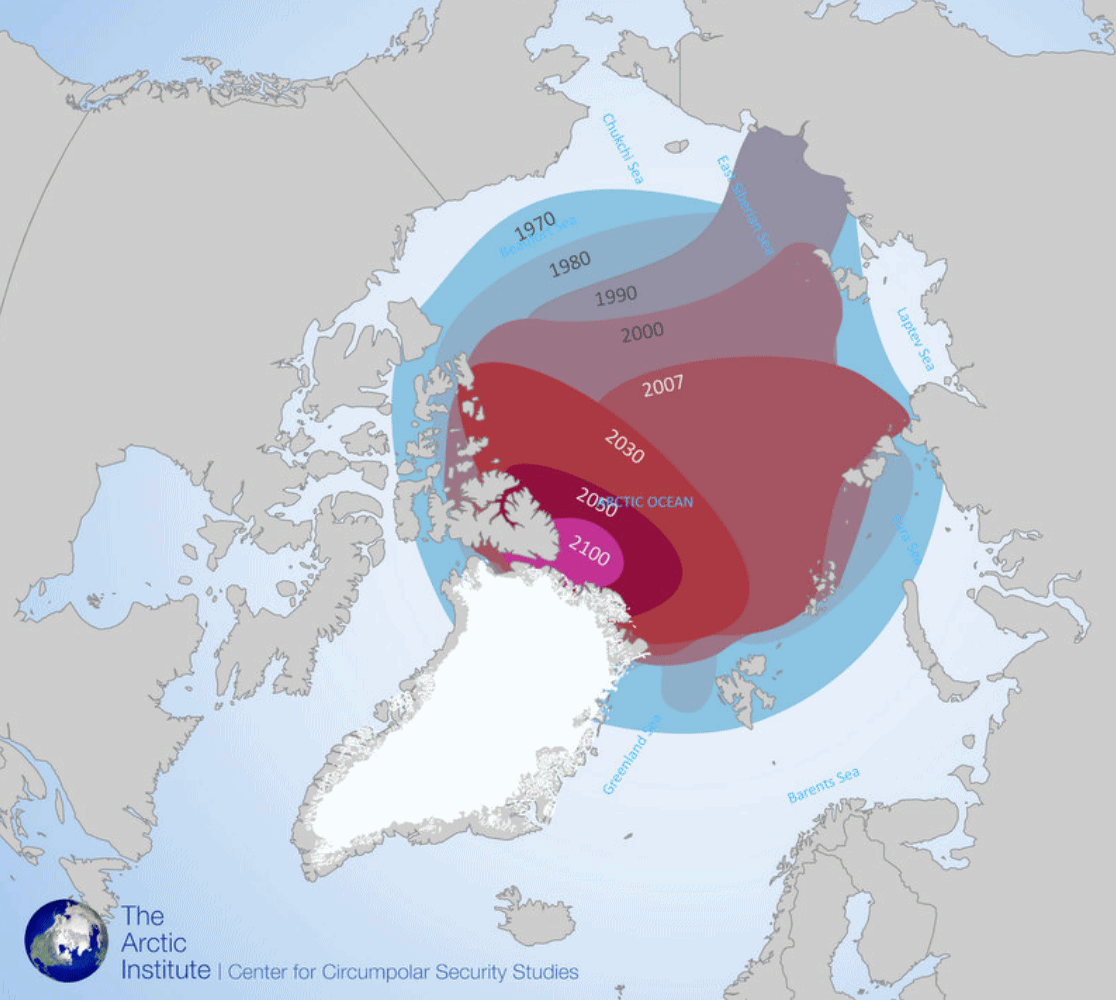 Full Speed Ahead: Shipping Plans Grow As Arctic Ice Fades
Full Speed Ahead: Shipping Plans Grow As Arctic Ice Fades. Here's an excerpt of a head-shaking article at
Yale Environment 360: "...
Russia
is farther ahead than any other country in exploiting Arctic shipping
opportunities. It has more icebreakers by far than any other nation — 40
— and more Arctic ports. (Canada and the United States have no
significant ports on the Arctic Ocean.) To further boost the development
of new shipping routes, Russia’s State Commission on Development of the
Arctic Regions convened in Moscow last April to establish a single
company that will oversee all logistical operations in the Arctic region
and coordinate the activities of various levels of government..."
Map credit: "
Past and projected summer sea ice decline in the Arctic" The Arctic Institute.
West Antarctic Is In Huge Trouble. But Now Scientists Say The Problem May Date Back to 1945. Chris Mooney has the story at
The Washington Post: "
Science
likes to surprise us. That’s the extraordinary, mind-opening thing
about it. It’s possible that is now happening with one of the most
stunning stories yet in the climate change saga — the finding that the
enormous glaciers of West Antarctica appear to be retreating in an “unstoppable” way.
It’s a process which, if it continues, could ultimately turn the West
Antarctic ice sheet into an area of wide open ocean and raise global sea
levels by 10 feet. It has long been assumed that this destabilization
of West Antarctica was caused by human-induced climate change. However,
a new study published in the journal Nature Wednesday may have just made that story considerably more complicated..."
Photo credit: "
Crevasses on Pine Island Glacier." (J Smith.)
Perils of Climate Change Could Swamp Coastal Real Estate. Here's a link and excerpt from
The New York Times: "
Real
estate agents looking to sell coastal properties usually focus on one
thing: how close the home is to the water’s edge. But buyers are
increasingly asking instead how far back it is from the waterline. How
many feet above sea level? Is it fortified against storm surges? Does it
have emergency power and sump pumps? Rising sea levels are changing the
way people think about waterfront real estate. Though demand remains
strong and developers continue to build near the water in many coastal
cities, homeowners across the nation are slowly growing wary of buying
property in areas most vulnerable to the effects of climate change..."
Photo credit: "Waves crashing over an experimental sea wall built to protect homes during high tide in Isle of Palms, S.C., last year." Credit Mic Smith/Associated Press.
Meteorologist Tells Christians: Climate Change Is Real. More on our outreach to conservatives and evangelicals at
Opposing Views: "...
David
Konisky of Georgetown University and Matthew Arbuckle of the University
of Cincinnati studied the "religiosity" of Catholics, Protestants and
Jews, and how their faith affected their environmental views. Konisky
and Arbuckle wrote in their study, "Individuals that affiliate with an
Evangelical Protestant church, all else equal, are less likely than both
Mainline and Protestant churches to be worried about climate change."
The study also found that Christians who believe the Bible is the
literal word of God "are less likely to express high degrees of concern
about the environment..."

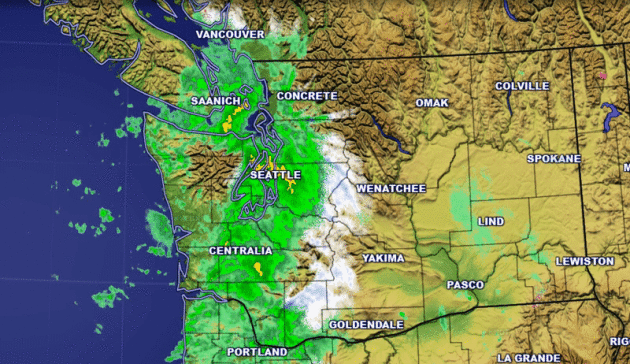
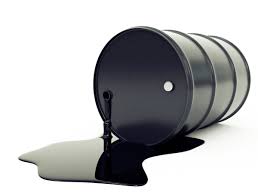
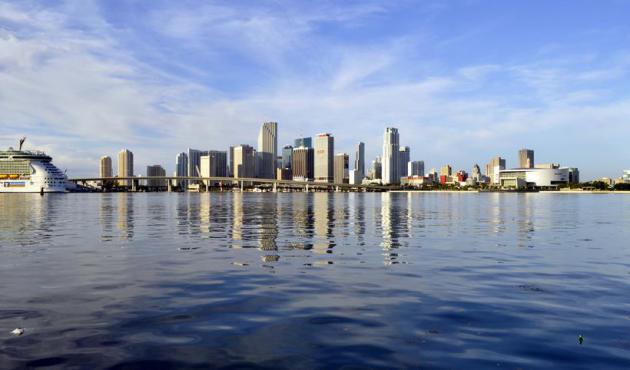

No comments:
Post a Comment